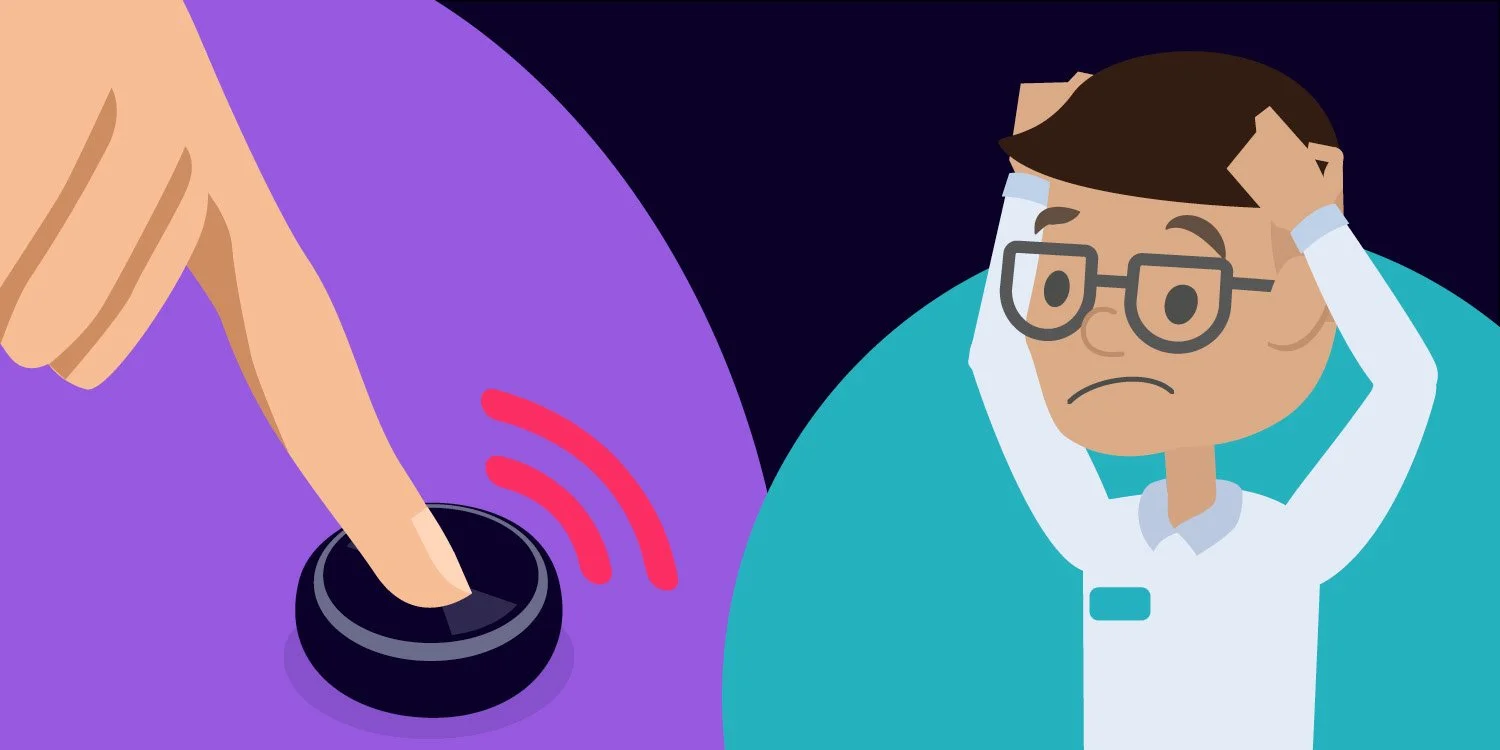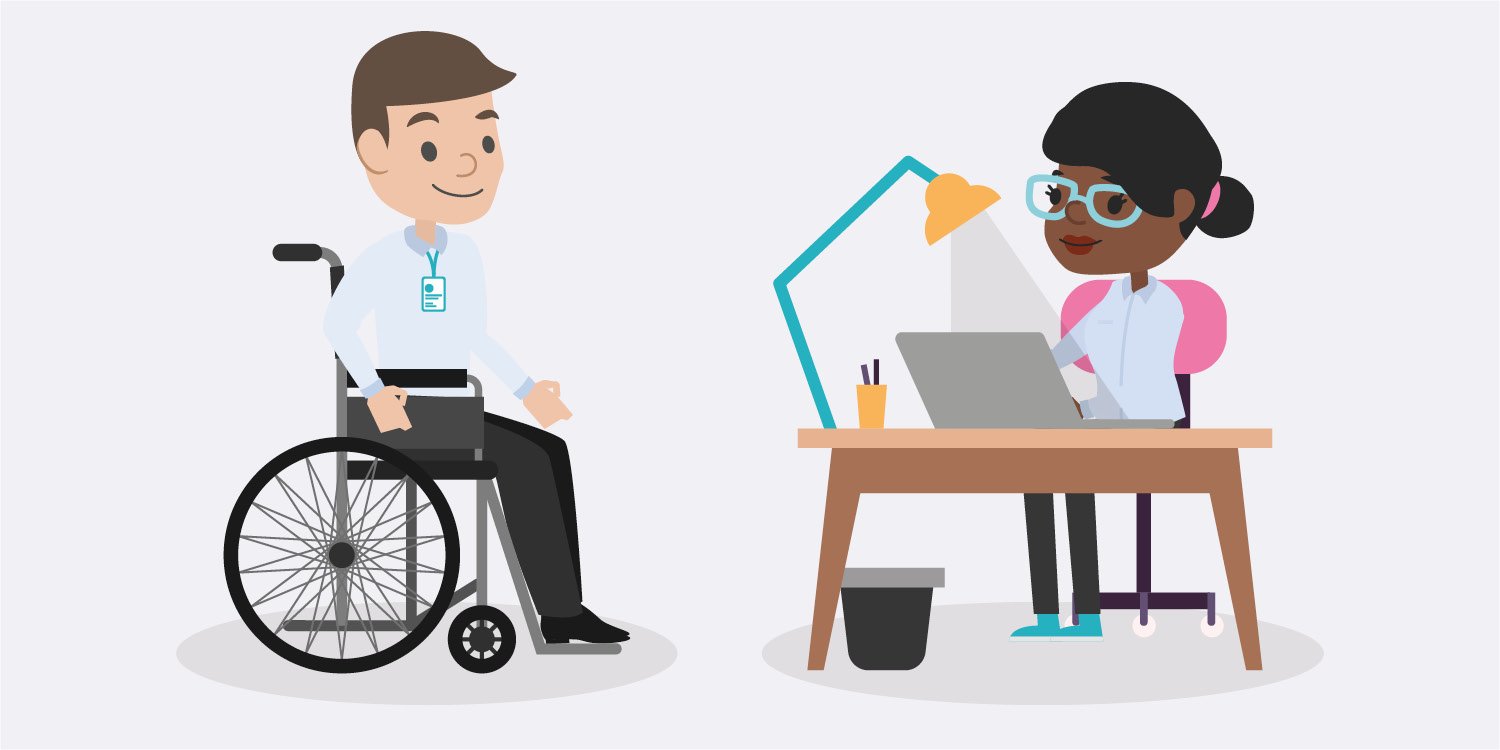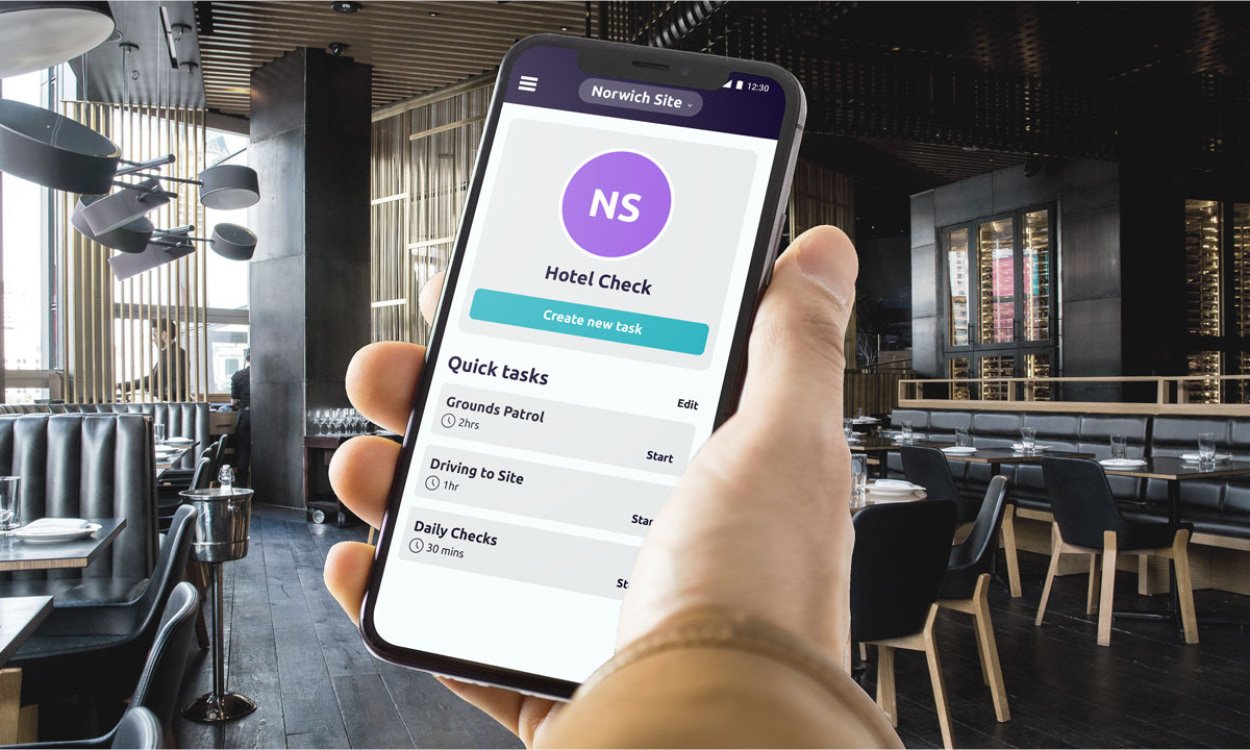Lone worker alarms
For those who work alone for part or all of their workday, the ability to request emergency support is of vital importance.
Lone worker alarms –provided through standalone devices, phone accessories and bespoke apps– make it simple for at-risk workers to get the help they need, wherever they are.
Who could benefit from lone worker alarms
Lone worker alarms provide huge benefits to those who work by themselves for any amount of the day, particularly if they face additional risks from their role or their work environment.
Lone working with the public
For some roles –such as care workers, nurses, security guards, couriers, taxi drivers, shop assistants, hotel staff– the risks of working alone are heightened by dealing with the public.
For those who have to work directly with customers and clients, carrying a lone worker alarm can provide peace of mind and means those workers can instantly request support if, for instance, a client becomes aggressive or abusive.
Lone working in high-risk environments
For other roles –such as workers in agriculture, construction, utilities, forestry, environmentalism and engineering– the risks of lone working may come mainly from the environment that they work in.
Working alone at heights, on uneven ground, or in confined spaces can bring unique risks, and workers may need a lone worker alarm in case they become trapped or injured by their environment.
With many of these roles, it can also be hard to call for help as the worker may be working in an unpopulated or hard to reach area.
Lone working with disabilities and special requirements
When looking at potential risks, it is important to consider the particular needs of all employees.
Some workers may have disabilities, conditions, or special requirements that require additional safety considerations. Many conditions may have no impact on a worker’s level of day-to-day risk, but some may require ‘reasonable adjustments’ from an employer –such as the provision of a safety alarm.
Take one of our clients who works from home in an administrative role. While admin roles are typically viewed as low-risk, the client has epilepsy and is at risk of tonic-clonic seizures. The client was worried that an unexpected seizure could result in an injury and that there would be no one to support them, so reached out to Safepoint to discuss the use of a wearable panic alarm.
Our wearable lone worker alarms come with fall detection so, if the client experiences a seizure, their supervisors (along with our 24/7 emergency response team) would be instantly alerted.
How do lone worker alarms work?
At their most basic, lone worker alarms allow a lone worker to notify their team should they need support. This can happen manually by pressing a button on their phone or an external device, or automatically if their alarm detects a sign of danger.
‘Smart’ lone worker alarms, such as Safepoints' lone worker system, do more than just raise an alert, they also start live GPS tracking. They can also monitor, share and store safety information such as battery life and signal strength, and can be personalised based on the user’s needs.
Once an alarm is raised, the lone worker’s chosen contacts will be notified and all relevant safety information will be shared. For some companies, this means sending the alert to the lone worker’s supervisors, while some may choose to use an Alarm Receiving Centre (ARC) to handle any potential alerts.
There are many more benefits to using a smart lone worker alarm. We’ll go through some of these below, by looking at Safepoint’s award-winning lone worker system.
Safepoint’s lone worker alarms
Safepoint provides easy to use lone worker apps, clever wearable devices, a robust online team management system and 24/7 protection through their GuardianPlus Alarm Receiving Centre. Here are some of the benefits you can expect from using Safepoint’s lone worker alarm system:
Easy to use app –through the Safepoint app, lone workers can set up customised timed ‘tasks’. If the worker fails to check in as safe before the timer runs out, an alarm is automatically raised. A user can also request emergency assistance at any time through a single tap of the app.
Discreet yet durable wearable devices – with Safepoint’s wearable panic alarms (which can be worn on the wrist, on a key ring or on a lanyard), lone workers can easily and surreptitiously request emergency help without ever touching their phone. What’s more, the alarm has a built-in fall detection (man-down) system.
Powerful team management – through the Safepoint Web Portal, companies can easily oversee their whole team. In the Portal, you can see where your team members are, what tasks they’re doing and, of course, manage any emergencies as they happen. You can also see historical data and analytics on your team’s safety status.
24/7 professional protection – with Safepoint’s GuardianPlus Alarm Receiving Centre, your staff can get the peace of mind of round-the-clock supervision. If a lone worker raises an alarm, either manually or automatically, one of our accredited GuardianPlus responders will handle it. All members of the ARC are fully trained and qualified to handle every step of an alarm, from the first response, to notifying a worker’s supervisors and escalating the situation with the emergency services.
Learn more about lone worker alarms
As you can see from the examples above, there can be a lot more to lone worker alarms than meets the eye. With Safepoint’s intelligent solutions, you can improve response times, automatically detect incidents and make sure an alarm is never missed.
For a complete tour of how Safepoint’s smart lone worker alarms can keep your team safe, get in touch or book a no-pressure demo.











